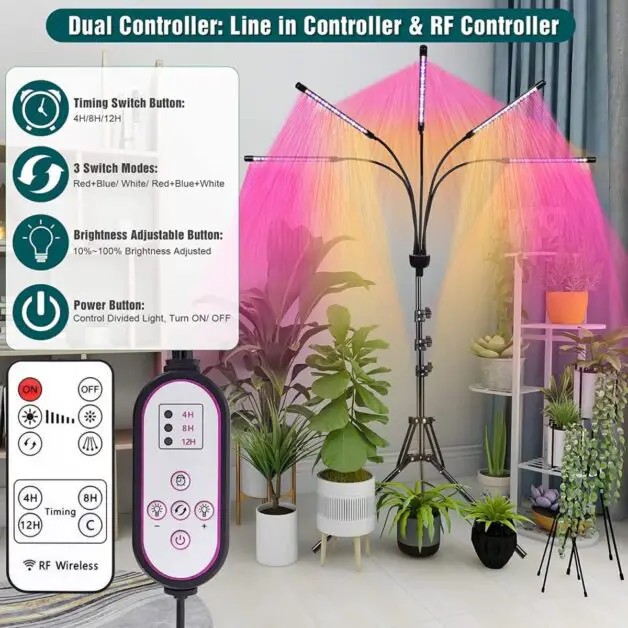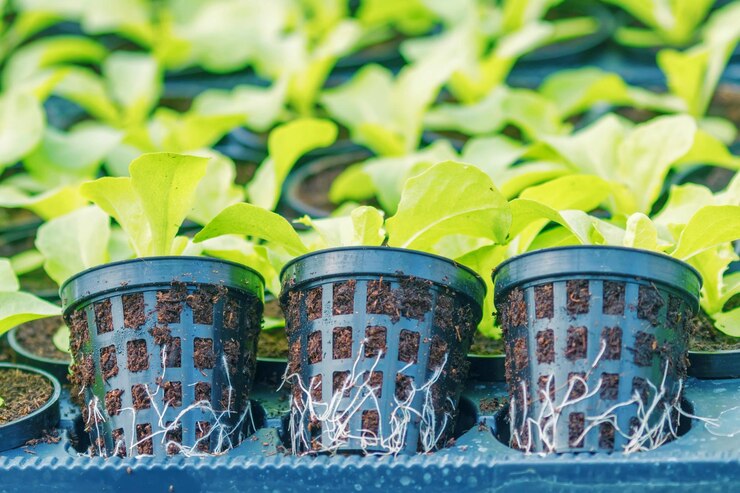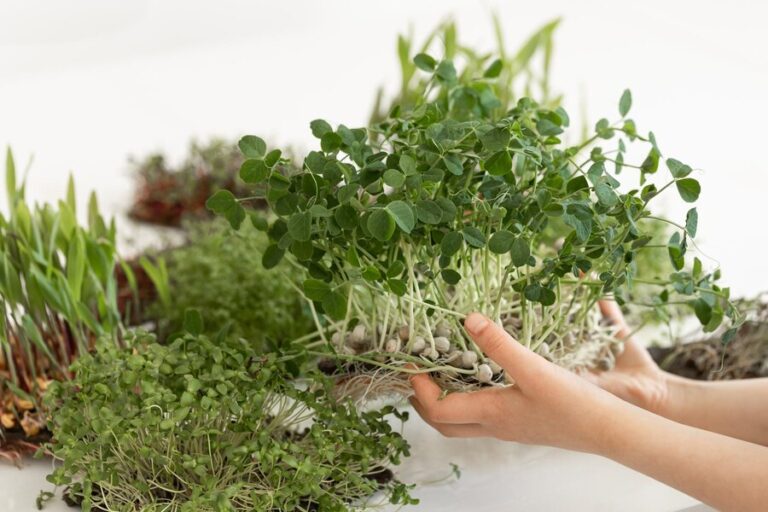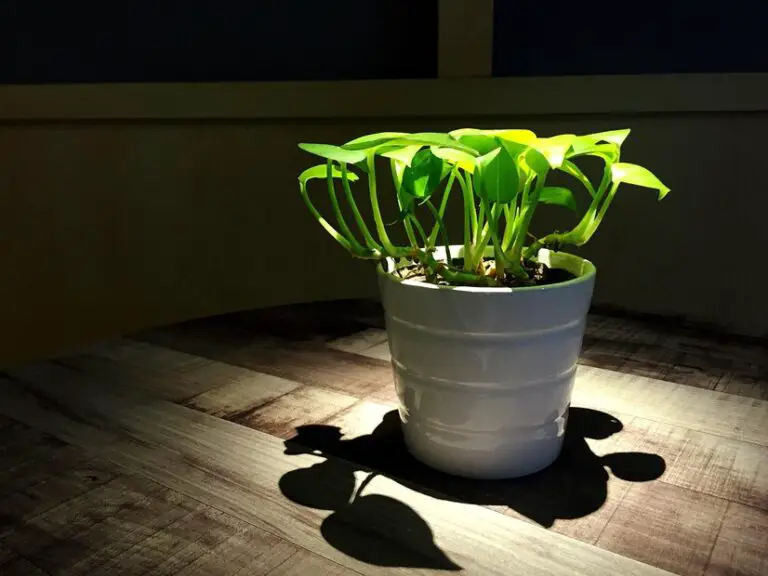How to Adapt to the Challenges of Growing Hydroponic Plants in Coastal Areas
Ever wondered how to grow hydroponic plants in coastal areas, where salt-laden air and unpredictable weather reign supreme? As any coastal dweller knows, the salty breeze and fluctuating humidity can pose unique challenges to hydroponic gardening. But fear not, fellow green thumbs! In this blog, we’ll dive into the depths of coastal hydroponic gardening, exploring innovative strategies to adapt and thrive in this challenging environment. From combating salt buildup to harnessing the power of sea breezes, we’ll uncover the secrets to successful coastal hydroponics. So grab your wetsuit and let’s embark on this aquatic adventure to cultivate flourishing gardens by the shore!”
Table of Contents
Identifying the Impact of Salinity on Hydroponic Plants
Salinity is a crucial factor to consider when it comes to the successful cultivation of hydroponic plants, particularly in coastal environments. The presence of high levels of salt in the water used for hydroponic systems can significantly impact plant growth and development. Salinity affects plants by altering the osmotic balance, inhibiting water uptake, and interfering with essential nutrient absorption.
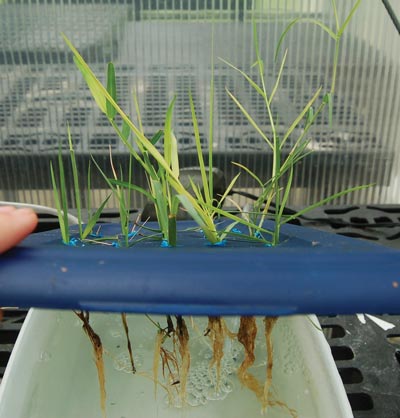
As salt concentration in the hydroponic solution increases, it creates a hypertonic environment around the plant roots.
In this hypertonic environment, water movement into the plant roots becomes more challenging.
Consequently, plants may struggle to absorb sufficient water, leading to cellular dehydration and stunted growth.
In severe cases, excessive salt levels can even result in plant death.
Precisely identifying the impact of salinity on hydroponic plants is crucial for maintaining optimal growth conditions.
Effective mitigation strategies can be implemented only when salinity levels are accurately assessed.
Electrical Conductivity (EC):EC is a widely used measure to quantify salt levels in the hydroponic solution.
It provides a straightforward and reliable indication of the solution’s salinity.
Regular monitoring of EC levels allows growers to detect any changes promptly.
Corrective actions can then be taken to maintain an optimal salinity range.
High levels of specific ions can directly impact plant health and growth.
For example:Sodium (Na+): Excessive sodium can disrupt water uptake and lead to toxicity.
Chloride (Cl-): High chloride levels can negatively affect photosynthesis and nutrient uptake.
Calcium (Ca2+): Adequate calcium is essential for cell wall strength and overall plant health.
Understanding the exact impact of salinity on hydroponic plants is critical for achieving optimal productivity and crop quality in coastal environments. By recognizing the challenges posed by salinity and implementing appropriate strategies, growers can create a favorable hydroponic system that mitigates the negative effects and maximizes plant performance.
Managing Water Quality in Coastal Hydroponic Systems
Water quality is a critical factor to consider when managing hydroponic systems in coastal environments. The high salinity levels of coastal waters can pose challenges to plant growth and overall system health. Salinity refers to the concentration of dissolved salts in water, and excessive levels can negatively affect plant roots’ ability to take in water and nutrients.

Managing water quality in coastal hydroponic systems involves several steps to ensure optimal salinity levels:
- Regular Monitoring:
Use a conductivity meter or salinity meter to regularly test the water’s electrical conductivity (EC). This helps gauge the level of dissolved salts in the water, indicating its salinity. - Determine Ideal EC Range:
Aim to maintain the electrical conductivity within the ideal range of 1.0 to 2.5 millisiemens per centimeter (ms/cm) for most hydroponic crops. Leafy greens like lettuce can tolerate slightly higher levels, up to 3.0 ms/cm. - Adjusting Salinity Levels:
If the salinity exceeds the recommended range, take corrective action to bring it back within optimal levels. This can be achieved by diluting the high-salinity water with fresh water or a low-salinity nutrient solution. - Utilize Reverse Osmosis (RO) Systems:
Install reverse osmosis (RO) systems to remove excess salts from the water and adjust its salinity level before it enters the hydroponic system. RO systems are effective in producing high-quality, low-salinity water suitable for hydroponic cultivation. - Regular Maintenance:
Implement a routine maintenance schedule to ensure the proper functioning of monitoring equipment and RO systems. Regularly calibrate conductivity meters and replace filters in RO systems to maintain accurate readings and efficient operation.
By following these steps and maintaining vigilant oversight of water quality, you can effectively manage salinity levels in coastal hydroponic systems, promoting optimal conditions for plant growth and productivity.
Choosing the Right Hydroponic System for Coastal Environments
When it comes to coastal environments, choosing the right hydroponic system is crucial for the success of your plants. The unique conditions found in coastal areas, such as high levels of salt in the air and potential exposure to strong winds, require careful consideration.
nutrient film technique (NFT)
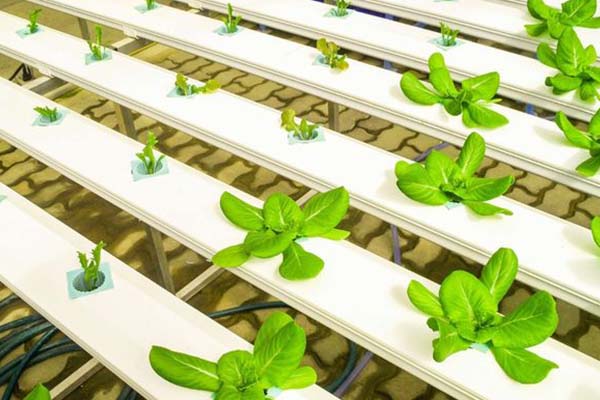
One option to consider is the nutrient film technique (NFT) system. This system is often favored in coastal areas due to its efficient use of water and ability to reduce the risk of salt accumulation. In an NFT system, a thin film of nutrient-rich water is continuously circulated over the roots of the plants, providing them with a constant supply of nutrients. This helps to minimize the impact of salt on the plants and ensures they receive the necessary nourishment to thrive in a coastal environment.
deep water culture (DWC) system
Another suitable option for coastal hydroponics is the deep water culture (DWC) system. In this system, the plants’ roots are submerged in a nutrient-rich solution, allowing for excellent oxygenation and hydration. The large volume of water in the DWC system helps dilute salt concentrations and reduces the risk of salt accumulation in the plants’ tissues. Additionally, the buoyancy of the plants’ roots in the nutrient solution provides stability against strong coastal winds.
It is important to note that regardless of the hydroponic system chosen, regular monitoring and adjustment of the nutrient solution is essential in coastal environments. The salt levels in the water need to be closely controlled to prevent damage to the plants. Conductivity meters can be used to measure the electrical conductivity of the nutrient solution, providing an indication of the salt concentration. Regular flushing of the system with fresh water may also be necessary to remove accumulated salts and maintain optimal conditions for plant growth.
The following table explain different hydroponic systems for coastal environments:
| Hydroponic System Type | Advantages | Considerations |
|---|---|---|
| 1. Nutrient Film Technique (NFT) | – Efficient nutrient and water use. | – Susceptible to power outages or pump failures. |
| – Suitable for a variety of crops. | – Requires careful monitoring in fluctuating conditions. | |
| 2. Deep Water Culture (DWC) | – Simple system design. | – Vulnerable to algal growth in warm coastal climates. |
| – Provides ample oxygen to roots. | – Requires vigilant pH and nutrient monitoring. | |
| 3. Drip System | – Versatile and adaptable. | – Wind can affect water distribution in coastal areas. |
| – Reduces water and nutrient waste. | – Regular maintenance needed to prevent clogging. | |
| 4. Aeroponics | – High oxygen levels for root health. | – Prone to clogging in misting nozzles in salt-laden air. |
| – Water-efficient with rapid nutrient absorption. | – Requires additional protection against salt exposure. | |
| 5. Vertical Farming Systems | – Maximizes space efficiency. | – Wind exposure may impact vertical setups. |
| – Offers scalability in limited space. | – Protection needed against salt spray and harsh winds. |
Note: This quantitative table provides a quick overview of advantages and considerations for different hydroponic systems in coastal environments. Growers should choose a system based on their specific needs, considering factors like salt exposure, wind, and system maintenance.
In conclusion, selecting a hydroponic system like NFT or DWC can be effective for coastal environments. However, close monitoring and management of the nutrient solution are crucial to prevent salt accumulation and ensure healthy plant growth.
After using the CropKing Hydroponic Greens Growing System for a while, I’ve been impressed by its efficiency and convenience. Setting it up was straightforward, and its vertical design saved a lot of space in my gardening area. I loved being able to grow fresh greens year-round, regardless of the weather outside. The system’s nutrient delivery mechanism ensured that my plants received the perfect balance of nutrients, resulting in robust growth and vibrant, healthy greens.
However, I did encounter a few challenges along the way. Monitoring and maintaining the system required more attention than I initially anticipated, especially regarding nutrient levels and pH balance. Additionally, the initial cost of the system was a bit high, but I found that the long-term benefits outweighed this investment. Overall, despite these minor drawbacks, the CropKing Hydroponic Greens Growing System has been a game-changer for my home gardening, providing me with a consistent supply of fresh, pesticide-free greens throughout the year.
- Efficient Use of Space: Hydroponic systems like this one allow for vertical growing, maximizing the use of limited space.
- Year-Round Growing: With controlled environments, hydroponic systems enable year-round growing regardless of weather conditions.
- Water Conservation: Hydroponic systems use significantly less water compared to traditional soil-based gardening, making them more environmentally friendly.
- No Weeding: Since there’s no soil, there’s no need to deal with weeds, reducing maintenance efforts.
- Optimized Nutrient Delivery: Nutrients are delivered directly to the plant roots, ensuring efficient absorption and growth.
- Pesticide-Free: Hydroponic systems typically require fewer pesticides or none at all, resulting in cleaner, healthier produce.
- Faster Growth: Plants grown hydroponically often grow faster than those in soil, leading to quicker harvests.
- Initial Cost: Setting up a hydroponic system like this one can be initially expensive due to the cost of equipment and infrastructure.
- Technical Knowledge Required: Operating a hydroponic system effectively requires some level of technical know-how, which may be intimidating for beginners.
- Reliance on Electricity: Many hydroponic systems require electricity to power pumps, lights, and other components, leading to ongoing energy costs.
- Risk of System Failure: Malfunctions in equipment or power outages can quickly impact plant health in a hydroponic setup.
- Monitoring and Maintenance: Regular monitoring and maintenance are essential to prevent nutrient imbalances, pests, and diseases.
- Limited Crop Variety: Not all plants thrive in hydroponic systems, limiting the variety of crops that can be grown compared to traditional gardening methods.
- Dependency on Supplies: Hydroponic systems rely on specific nutrients and supplies, which may not always be readily available or affordable.
Selecting Suitable Plant Varieties for Coastal Hydroponics
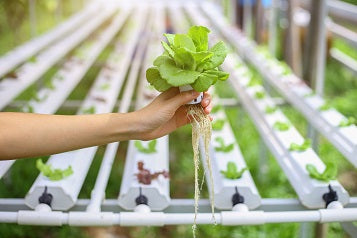
Selecting suitable plant varieties for coastal hydroponics requires careful consideration of the unique challenges posed by the coastal environment. When it comes to choosing plants for hydroponic cultivation in coastal regions, it is essential to opt for varieties that can withstand the harsh conditions, including salt spray, high winds, and varying levels of humidity.
One of the key factors to consider is the tolerance of plants to salinity. Coastal areas often have high levels of salt in the air, water, and soil, which can impact the growth and health of hydroponic plants. Therefore, it is crucial to select plant varieties that have a good salt tolerance. Some examples of salt-tolerant plants suitable for coastal hydroponics include certain lettuce varieties, Swiss chard, kale, and herbs like rosemary and thyme. These plants have adapted to survive in saline environments and can thrive in hydroponic systems with proper management.
The following table shows the different plant varieties for coastal hydroponics:
| Plant Variety | Salinity Tolerance | Wind Resistance | Adaptability to Coastal Conditions |
|---|---|---|---|
| 1. Lettuce (Leafy Greens) | – Moderate salinity tolerance. | – Low susceptibility to wind damage. | – Well-suited for coastal hydroponics. |
| 2. Spinach | – Moderate salinity tolerance. | – Low susceptibility to wind damage. | – Thrives in coastal hydroponic setups. |
| 3. Kale | – Moderate to high salinity tolerance. | – Resistant to mild wind exposure. | – Suitable for coastal hydroponics. |
| 4. Swiss Chard | – Moderate salinity tolerance. | – Moderate wind resistance. | – Adaptable to coastal conditions. |
| 5. Herbs (Basil, Mint) | – Low to moderate salinity tolerance. | – May require protection from strong winds. | – Some herbs thrive in coastal hydroponics. |
In addition to salt tolerance, it is important to choose plant varieties with the ability to withstand high winds. Coastal areas are prone to strong winds, which can damage delicate plants. Look for plant varieties that have sturdy stems and strong root systems to anchor them in place.
Examples of wind-resistant plants for coastal hydroponics include kale, Swiss chard, and some cherry tomato varieties. These plants have the strength and flexibility to withstand gusty winds without compromising their growth. By selecting plant varieties that are well-suited to the coastal environment, hydroponic enthusiasts can ensure a successful and productive gardening experience.
By carefully considering these factors, hydroponic enthusiasts can ensure successful cultivation in coastal areas.
Optimizing Lighting and Temperature for Coastal Hydroponic Plants
Achieving optimal lighting and temperature conditions is crucial for the successful growth of hydroponic plants in coastal environments. The unique climate and environmental factors found in coastal areas require careful consideration and planning when it comes to providing the right amount of light and maintaining suitable temperature levels.
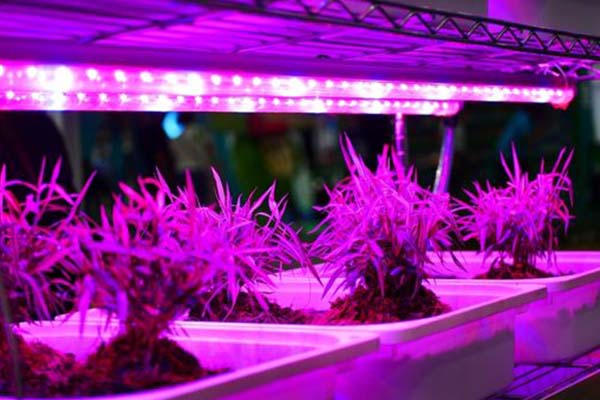
- Understanding Light Requirements:
Recognize the significance of light in photosynthesis, where plants convert light energy into chemical energy. Consider factors like intensity, duration, and potential fluctuations in sunlight due to cloud cover or shade. - Implementing Artificial Lighting:
Employ artificial lighting systems such as high-intensity discharge (HID) lamps or light-emitting diodes (LEDs) to supplement natural sunlight or provide the primary light source in indoor hydroponic setups. This ensures consistent light levels for optimal plant growth. - Controlling Temperature:
Acknowledge the importance of temperature control for coastal hydroponic plants, given exposure to varying weather conditions. Extremes in temperature can hinder growth, so maintaining optimal temperature ranges is crucial. - Utilizing Environmental Control Systems:
Employ environmental control systems like heaters, fans, or cooling systems to regulate temperature and create a stable growing environment, especially in coastal areas prone to temperature fluctuations. - Monitoring and Adjusting:
Continuously monitor temperature levels and adjust environmental control systems accordingly to meet the specific requirements of the plant varieties being cultivated. This proactive approach ensures optimal growth and yield in coastal hydroponic setups.
In conclusion, optimizing lighting and temperature for coastal hydroponic plants requires careful attention to the unique environmental conditions of coastal areas. By providing the right amount and quality of light, and maintaining optimal temperature ranges, gardeners and hydroponics enthusiasts can maximize the growth and productivity of their plants in this challenging coastal environment. Remember to regularly monitor and adjust lighting and temperature levels to meet the specific needs of the plants being cultivated.
Having used the LED Grow Light with Spectrum Adjustable Control Function, I’ve found it to be a versatile and efficient lighting solution for my indoor garden. Its adjustable spectrum control feature allowed me to customize the light output according to the specific needs of my plants at different growth stages. I appreciated the energy efficiency of LED technology, as it consumed less power compared to traditional HID lamps, resulting in lower electricity costs over time.
However, I did notice some limitations with this LED grow light. While it provided adequate coverage for smaller growing spaces, I found that it struggled to penetrate deeply into dense plant canopies, potentially leading to uneven growth in certain areas. Additionally, the initial cost of the LED grow light may be higher than some alternatives, which could be a consideration for budget-conscious growers. Overall, despite these minor drawbacks, the LED Grow Light with Spectrum Adjustable Control Function proved to be a reliable and effective lighting solution for my indoor gardening needs.
✅ Energy Efficiency: LEDs are known for their energy efficiency, consuming less power compared to traditional HID lamps, resulting in lower electricity bills.
✅ Long Lifespan: LED bulbs have a longer lifespan than HID lamps, reducing the frequency of bulb replacements and maintenance costs.
✅ Cool Operation: LED grow lights produce less heat than HID lamps, reducing the risk of heat damage to plants and allowing for closer positioning to plants without risk of burning.
✅ Compact Design: The compact design of LED grow lights makes them suitable for use in small spaces or in conjunction with other lighting fixtures.
✅ Full Spectrum: Many LED grow lights provide a full spectrum of light, which is beneficial for promoting healthy growth and maximizing yield.
✅ Low Heat Emission: LED grow lights emit minimal heat, reducing the need for additional ventilation and cooling systems in your growing space.
❌ Intensity: While LED grow lights can be powerful, some models may lack the intensity of HID lamps, particularly for certain types of plants or growth stages.
❌ Complexity: LED grow lights with adjustable spectrum control may have a learning curve for beginners, requiring some experimentation to find the optimal settings for different plants.
❌ Light Penetration: LED grow lights may not penetrate as deeply into plant canopies as HID lamps, potentially leading to uneven growth and lower yields in dense crops.
❌ Quality Variability: The market for LED grow lights is vast, and not all products offer the same level of quality or reliability, so it’s essential to research and choose a reputable brand.
❌ Limited Coverage: Some LED grow lights may have limited coverage area compared to HID lamps, requiring multiple fixtures for larger growing spaces.
❌ Dependency on Electricity: Like all electrical devices, LED grow lights rely on electricity, so power outages or electrical issues can affect their operation.
Addressing Humidity and Ventilation Concerns in Coastal Hydroponics
Humidity and ventilation concerns are crucial factors to address when considering coastal hydroponics. The unique environmental conditions near the coast, such as high humidity levels and salt-laden air, can significantly impact the growth and health of hydroponic plants. Failing to manage humidity and ventilation effectively can result in a range of issues, including fungal diseases, poor plant transpiration, and reduced yields.
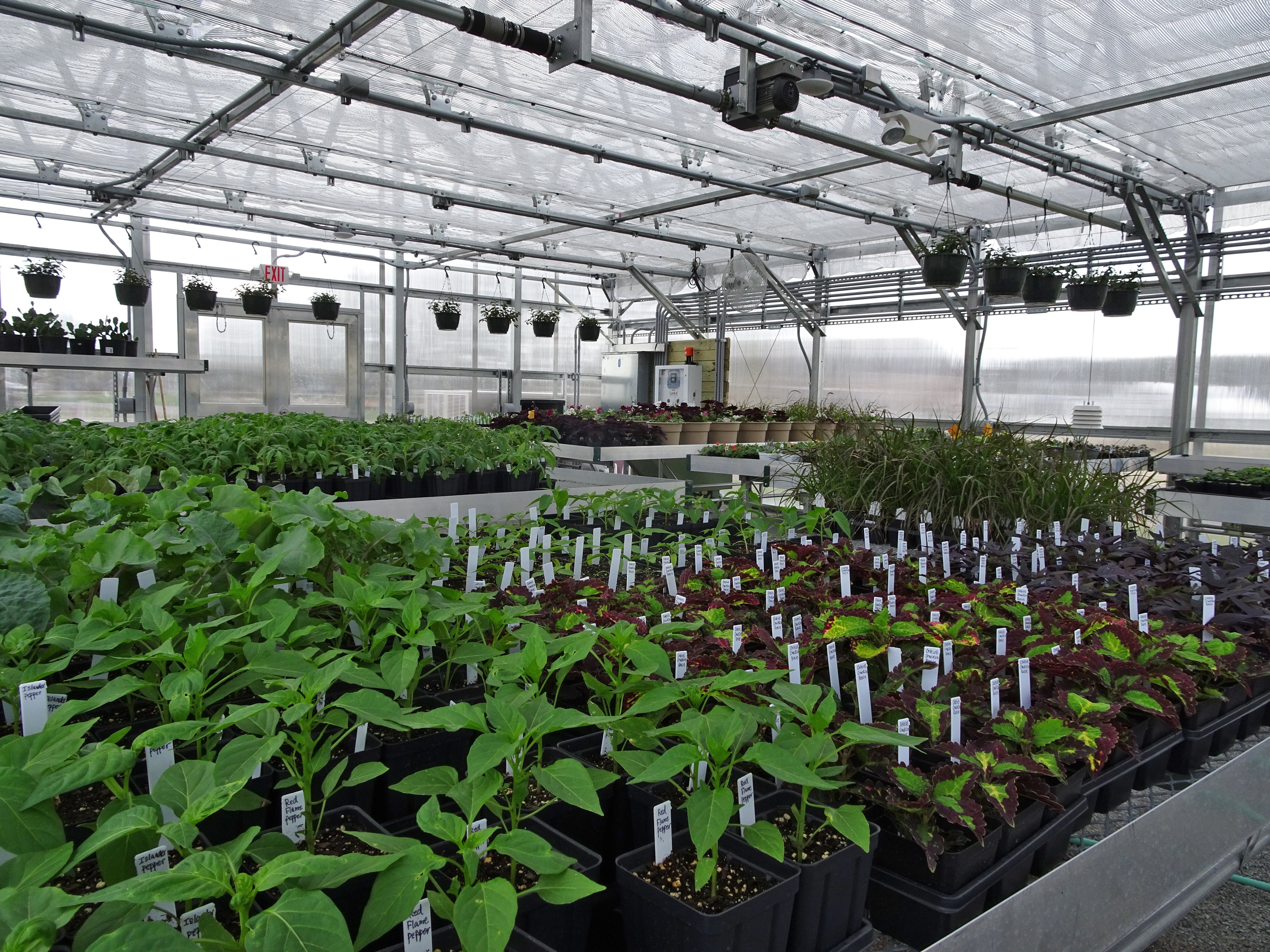
In conclusion, addressing humidity and ventilation concerns is paramount in coastal hydroponics. By implementing effective ventilation systems and monitoring humidity levels, growers can create optimal conditions for their plants to thrive. Additionally, meticulous attention to these factors can help minimize the risk of fungal diseases and ensure better transpiration, ultimately leading to healthier and more productive hydroponic crops.
Managing Nutrient Imbalances in Coastal Hydroponic Systems
In coastal hydroponic systems, managing nutrient imbalances is crucial to maintain healthy plant growth and maximize yields. Due to the unique environmental conditions in coastal areas, such as saltwater intrusion and high salinity levels, nutrient imbalances can occur more frequently and have a greater impact on plant health.
- Salinity Accumulation in Root Zone:
- Coastal hydroponic systems face the challenge of accumulating salts in the root zone.
- Saltwater intrusion, whether from irrigation water or nearby seawater, introduces high levels of sodium (Na+), chloride (Cl-), and other salts.
- These salts disrupt the delicate balance of essential nutrients around plant roots, negatively impacting growth.
- Nutrient Imbalances and Negative Effects:
- Nutrient imbalances due to excessive salts can lead to:
- Cellular Dehydration: Reduced water uptake by plants.
- Stunted Growth: Hindered nutrient absorption.
- In severe cases, Plant Death.
- Nutrient imbalances due to excessive salts can lead to:
- Effective Management Strategies:
- Regular Monitoring and Testing:
- Regularly assess nutrient levels to detect changes promptly.
- Develop a comprehensive nutrient management plan based on plant needs and coastal water quality.
- Adjust Nutrient Solutions:
- Maintain appropriate ratios and concentrations of essential elements.
- Minimize excess salts to prevent imbalances.
- Flushing and Leaching Techniques:
- Flush the system periodically to remove accumulated salts.
- Leach excess salts from the root zone.
- Continuous Diligence:
- Nutrient management is an ongoing process.
- Attention to detail ensures healthy plant growth.
- Regular Monitoring and Testing:
- Research and Innovation:
- Further advancements in nutrient management practices specific to coastal environments will enhance sustainability and productivity.
By implementing these strategies, hydroponic growers can maintain optimal nutrient levels and thrive in coastal conditions! 🌱🌊🔬
Implementing Effective Pest and Disease Control Strategies in Coastal Hydroponics
Coastal hydroponic systems offer a unique set of challenges when it comes to managing pests and diseases. The proximity to the ocean and the often high humidity levels can create favorable conditions for the proliferation of harmful organisms. However, with effective pest and disease control strategies, these challenges can be overcome, ensuring the health and productivity of your hydroponic plants.
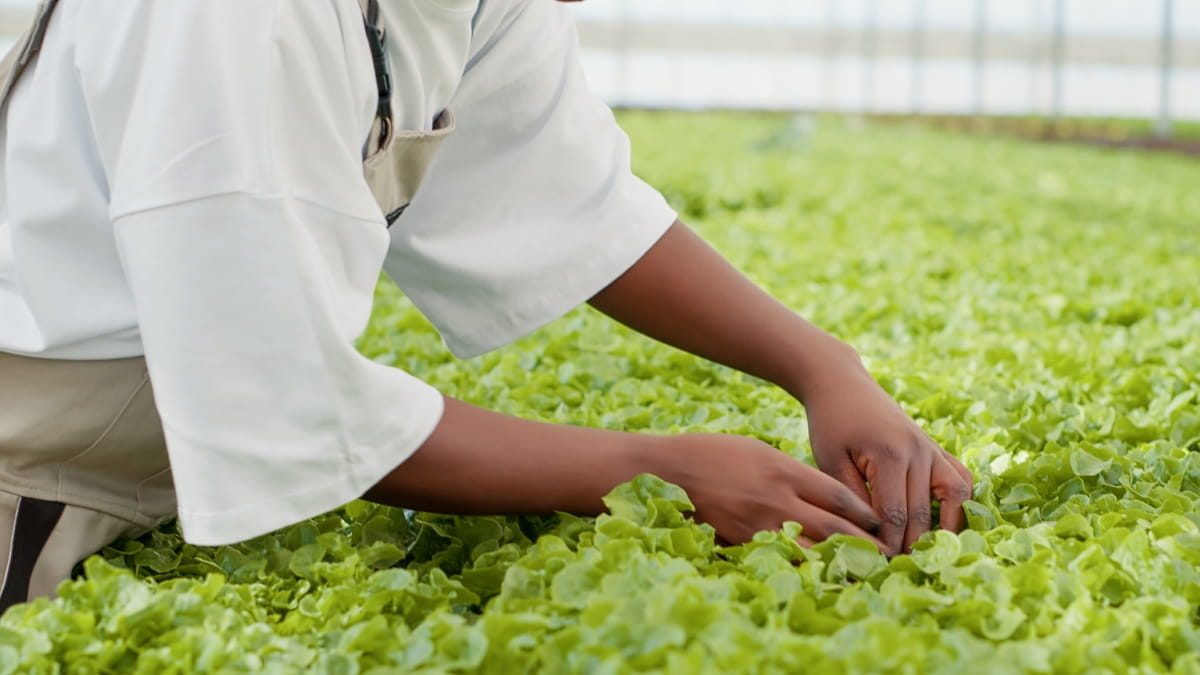
- Implement a strict hygiene protocol:
- Regularly clean and disinfect the hydroponic system, including the nutrient solution reservoir, grow trays, and equipment, to prevent the buildup and spread of pests and diseases.
- Remove dead plant material and debris from the system, as they can serve as breeding grounds for pests and hosts for pathogens.
- Monitor for pests and diseases:
- Conduct routine inspections of plants, checking both foliage and root systems for signs of infestation or infection.
- Early detection is crucial; address any suspicious activity or abnormalities immediately.
- Take targeted action:
- Implement treatments such as organic insecticides or fungicides if pests or diseases are detected.
- Consider biological control methods like beneficial insects or nematodes to combat pests effectively.
Remember, prevention is always the best approach when it comes to pest and disease control. Implementing proper sanitation practices, conducting regular inspections, and promptly addressing any issues that arise will help you maintain a healthy and thriving hydroponic system in coastal environments. Stay vigilant, and your plants will thank you with abundant growth and bountiful harvests.
Overcoming Water Supply Challenges in Coastal Hydroponic Systems
Coastal hydroponic systems can present unique challenges when it comes to water supply. The proximity to the ocean brings along concerns such as saltwater intrusion, limited freshwater resources, and the need for irrigation management. Addressing these challenges is crucial to ensuring the success and sustainability of coastal hydroponics.
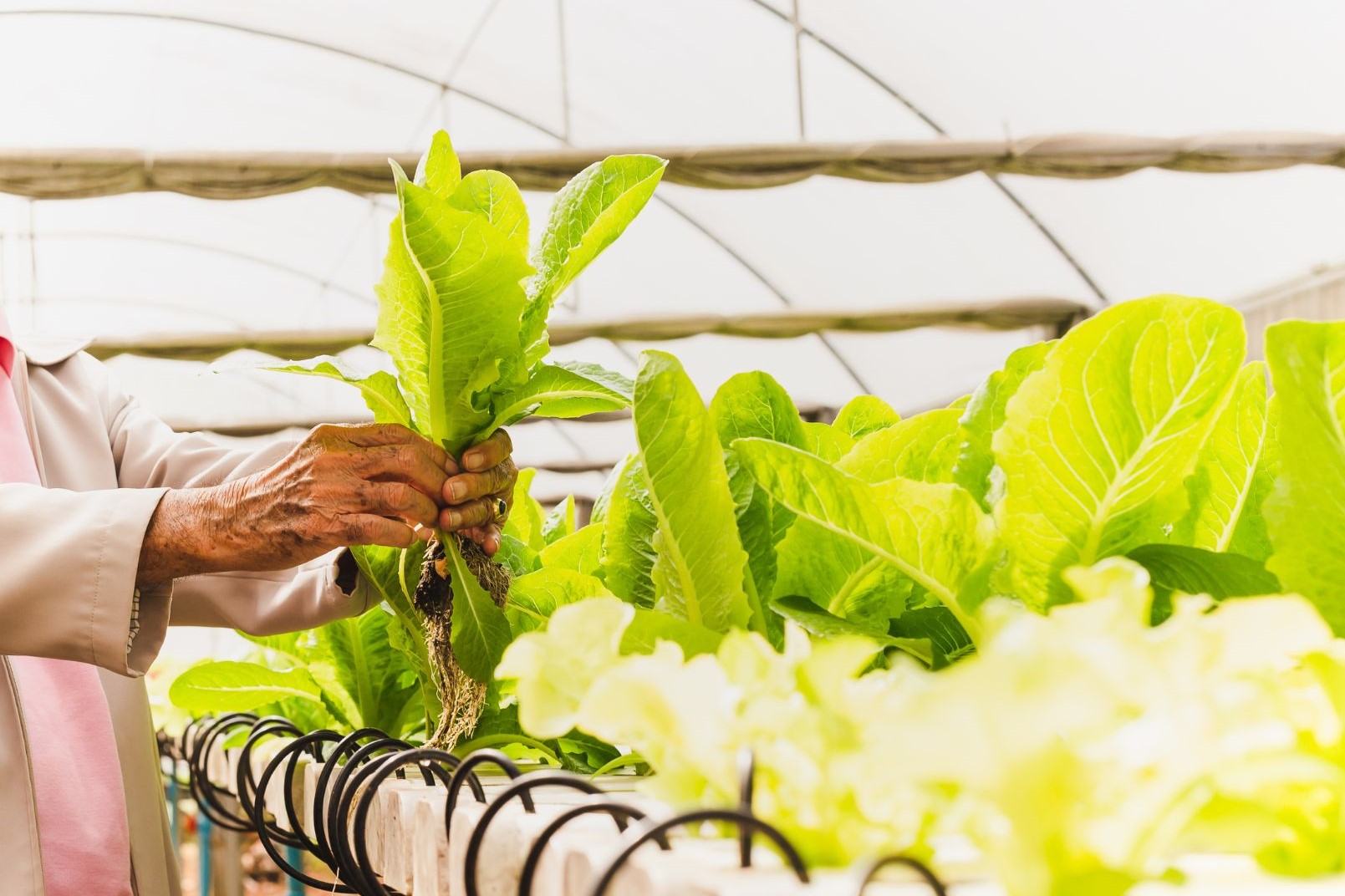
- Assess Water Quality and Availability:
- Evaluate Water Sources: Identify potential water sources, such as wells, rainwater harvesting, or municipal supply. Assess their quality, salinity levels, and reliability.
- Water Testing: Conduct water quality tests to determine pH, nutrient levels, and any impurities. This information will guide your nutrient management plan.
- Design a Comprehensive Water Management Plan:
- Source Prioritization: Prioritize freshwater sources over saltwater sources. Freshwater is essential for healthy plant growth.
- Storage and Reservoirs: Set up storage tanks or reservoirs to collect and store water. Ensure they are properly sealed to prevent contamination.
- Rainwater Harvesting: Install rainwater collection systems to capture and store rainwater during wet seasons.
- Drip Irrigation System: Implement a drip irrigation system to deliver water directly to plant roots. This minimizes water loss due to evaporation and runoff.
- Automated Systems: Consider automated irrigation controllers that adjust watering schedules based on plant needs and weather conditions.
- Address Saltwater Intrusion:
- Desalination Techniques:
- Reverse Osmosis (RO): Install RO systems to remove salt and impurities from water. RO membranes selectively allow water molecules to pass through while blocking salts.
- Electrodialysis: Another desalination method that uses an electric field to separate ions and remove salts.
- Nutrient Solutions Adjustment:
- Monitor Salinity Levels: Regularly measure the electrical conductivity (EC) of the nutrient solution. High EC indicates elevated salt levels.
- Adjust Nutrient Formulas: Modify nutrient solutions by reducing the concentration of salts (e.g., sodium, chloride) to match the water’s salinity. Use specialized hydroponic nutrient formulations.
- Leaching: Periodically flush the growing medium with excess freshwater to remove accumulated salts.
- Desalination Techniques:
- Mitigate Water Loss and Wastage:
- Mulching: Apply organic mulch around plant bases to reduce evaporation from the growing medium.
- Cover Systems: Use covers or shade structures to minimize direct sunlight exposure and evaporation.
- Regular Inspections: Check for leaks, clogs, or inefficient irrigation. Repair or replace faulty components promptly.
- Emergency Preparedness:
- Backup Water Sources: Have alternative water sources in case of supply interruptions.
- Emergency Storage: Maintain emergency water storage for critical periods (e.g., extreme heatwaves or droughts).
- Continuous Monitoring and Adaptation:
- Data Collection: Record water usage, salinity levels, and plant responses. Use this data to refine your water management plan.
- Adapt to Seasonal Changes: Adjust irrigation schedules based on changing weather conditions and plant growth stages.
Remember that successful coastal hydroponics relies on a holistic approach that integrates water management with nutrient delivery and environmental factors. Regular monitoring, flexibility, and proactive adjustments are key to sustainable and productive hydroponic systems. 🌱💧
Exploring the Role of Wind in Coastal Hydroponic Environments
Coastal hydroponic environments present unique challenges, and one important factor to consider is the role of wind. Wind can have both positive and negative effects on hydroponic plants, making it crucial for growers to understand its dynamics and implement appropriate measures.
- Positive Aspects of Wind:
- Air Circulation: Wind helps maintain good air circulation within the hydroponic system.
- Preventing Humidity Buildup: Adequate airflow prevents excessive humidity, which can lead to fungal growth and other issues.
- Strengthening Stems: Proper airflow strengthens plant stems, reducing the risk of damage from weak structures.
- Challenges Posed by Excessive Wind:
- Structural Damage: Strong gusts can harm delicate plant structures, causing breakage or uprooting.
- Increased Transpiration: Wind accelerates transpiration, leading to faster moisture loss from plants.
- Stress and Dehydration: Rapid water loss can stress plants and cause dehydration.
- Mitigation Strategies:
- Windbreakers or Windshields: Install protective barriers to shield crops from excessive wind.
- Balancing Benefits and Risks: Strive for optimal air movement without compromising plant health.
Remember, finding the right balance between airflow and protection is essential for successful coastal hydroponics! 🌱🌬️🌊
Understanding the Effects of Coastal Soil Conditions on Hydroponic Plants
Coastal soil conditions can have a significant impact on hydroponic plants, requiring careful consideration for successful cultivation. The unique characteristics of coastal soils, such as high salinity and sandy texture, can pose challenges for plant growth and nutrient uptake. Salinity, in particular, can hinder the ability of plants to absorb water and essential nutrients, leading to stunted growth and decreased yields.
High salt levels disrupt the osmotic balance within plant cells, leading to dehydration and wilting.
Salt accumulation in the root zone interferes with nutrient uptake and metabolism, hindering plant growth and productivity.
High salt levels disrupt the osmotic balance within plant cells, leading to dehydration and wilting.
Salt accumulation in the root zone interferes with nutrient uptake and metabolism, hindering plant growth and productivity.
Hydroponic systems eliminate reliance on coastal soil by delivering nutrients directly to plants through the water solution.
Growers can customize nutrient composition to meet the specific needs of plants, ensuring optimal growth and productivity.
By understanding and addressing the challenges posed by coastal soil conditions, hydroponic farming in coastal areas can thrive.
Hydroponic systems offer a sustainable solution for gardening enthusiasts, allowing them to overcome the limitations of coastal soils and cultivate healthy, productive plants.
Developing a Comprehensive Nutrient Management Plan for Coastal Hydroponics
One of the key factors for successful hydroponic farming, especially in coastal environments, is the implementation of a comprehensive nutrient management plan. Nutrients play a crucial role in the growth and development of plants, and maintaining the right balance of essential elements is essential for optimal plant health and productivity.
- Water Source Analysis:
- Coastal water sources often have elevated salinity levels due to their proximity to the ocean.
- Conduct a thorough analysis of the water:
- Salinity: Measure salt content.
- pH Levels: Assess acidity or alkalinity.
- Nutrient Content: Understand existing nutrient levels.
- Based on results, take appropriate measures to adjust water quality.
- Adjusting Water Quality:
- Desalination: If salinity is too high, consider desalination techniques.
- Dilution: Dilute seawater with freshwater to reduce salinity.
- Amendments: Add specific nutrients to ensure optimal uptake by plants.
- Plant Varieties and Nutrient Needs:
- Different crops have varying nutrient requirements.
- Choose plant varieties suited to coastal hydroponics:
- Some may be salt-tolerant.
- Others may need specific nutrient ratios for optimal growth.
By selecting suitable plant varieties for coastal hydroponics, growers can ensure that the nutrient management plan is tailored to the specific needs of the crops, thereby maximizing their yield and quality.
Adapting Irrigation Techniques for Coastal Hydroponic Systems
Adapting irrigation techniques is crucial when cultivating hydroponic plants in coastal environments. The unique challenges posed by these regions, such as high salinity, make it necessary to tailor watering methods to ensure optimal plant growth and productivity.
drip irrigation system
One effective approach is to implement a drip irrigation system that delivers water directly to the plant roots. This method reduces the risk of salt accumulation in the growing medium by avoiding surface wetting. Additionally, using drip irrigation allows for precise control over the amount of water delivered to each plant, minimizing water waste. Regular monitoring of the irrigation system is essential to ensure its proper functioning, as any blockages or leaks can disrupt the distribution of water to the plants.
By adapting irrigation techniques to address the specific needs of coastal hydroponic systems, gardeners can optimize water usage and mitigate the negative effects of salinity on plant health.
Utilizing Seaweed and Other Natural Additives in Coastal Hydroponics
Seaweed and other natural additives have become increasingly popular in coastal hydroponics due to their numerous benefits for plant growth and overall system health. These natural additives, derived from seaweed extracts, provide essential nutrients and bio-stimulants that enhance plant vigor, increase yield, and improve tolerance to environmental stresses.
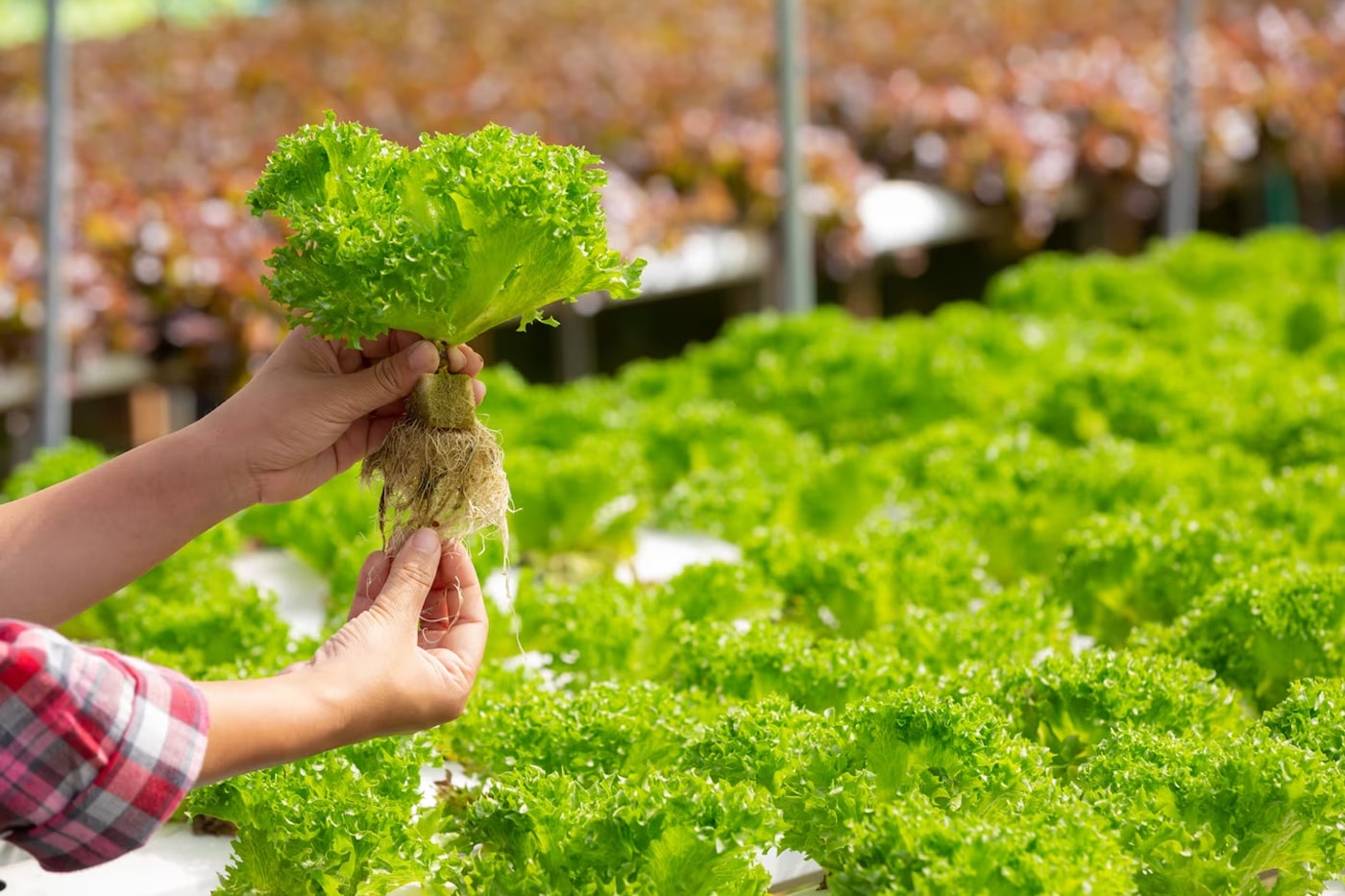
Utilize seaweed extracts:
- Seaweed is a rich source of trace elements, vitamins, and minerals essential for plant growth.
- Seaweed extracts contain macro and micronutrients such as nitrogen, phosphorus, potassium, calcium, magnesium, and iron.
- These nutrients are readily available and easily absorbed by plants, ensuring optimal nutrient uptake and utilization.
Benefit from bio-stimulants:
- Seaweed extracts contain bio-stimulants that promote root development, enhance nutrient absorption, and stimulate plant growth.
- These bio-stimulants contribute to healthier and more resilient plants in coastal hydroponic systems.
Incorporate other natural additives:
- Compost, worm castings, and organic fertilizers are valuable additions to coastal hydroponics.
- They provide essential nutrients to plants while improving soil structure and microbial activity.
- Compost and worm castings enrich the growing media with organic matter, enhancing water-holding capacity and nutrient retention.
- Organic fertilizers offer a slow-release supply of nutrients derived from plant and animal sources, sustaining plant growth throughout the growing season.
The following table explains about the utilizing seaweed and other natural additives in coastal hydroponics:
| Natural Additive | Benefits | Quantitative Impact |
|---|---|---|
| 1. Seaweed Extracts | – Enhances plant growth and stress resistance. | – Recommended dilution: 1:1000 (Seaweed extract: Water). |
| – Contains essential micronutrients and hormones. | – Application frequency: 1-2 times per month. | |
| 2. Fish Emulsion | – Rich source of organic nitrogen. | – Dilution ratio: 1:4 (Fish emulsion: Water). |
| – Provides phosphorus and potassium. | – Apply every 2-4 weeks during the growing season. | |
| 3. Compost Tea | – Adds beneficial microorganisms to the soil. | – Brew for 24-48 hours before application. |
| – Improves nutrient availability. | – Apply every 2-3 weeks during the growing season. | |
| 4. Aloe Vera Extract | – Enhances root development and nutrient uptake. | – Dilution ratio: 1:10 (Aloe vera: Water). |
| – Boosts plant immunity. | – Apply every 2-3 weeks as a soil drench. | |
| 5. Molasses | – Stimulates microbial activity in the substrate. | – Dilution ratio: 1-2 tablespoons per gallon of water. |
| – Enhances nutrient absorption. | – Apply every 2-4 weeks during the growing season. |
By incorporating seaweed and other natural additives into coastal hydroponics, gardeners can harness the power of nature to achieve robust and sustainable plant growth. These additives offer a natural alternative to synthetic fertilizers, reducing the reliance on chemical inputs and minimizing the environmental impact. With their myriad of benefits, seaweed and other natural additives are undoubtedly a valuable tool for enhancing the productivity and resilience of coastal hydroponic systems.
Incorporating Technology and Automation for Successful Coastal Hydroponics
Technology and automation play a crucial role in ensuring the success of coastal hydroponics. With advancements in agricultural technology, hydroponic systems can now be equipped with automated features that enhance efficiency and yield.

- Automated Nutrient Delivery Systems:
- These systems ensure that plants receive precise and consistent amounts of nutrients.
- Benefits:
- Eliminates Risk: No more guesswork or manual mixing of nutrient solutions.
- Time-Saving: Farmers can allocate their time more efficiently.
- Optimized Growth: Plants get the nutrients they need without excess or deficiency.
- Minimized Imbalances: Reduced chances of nutrient-related issues.
- Environmental Monitoring and Control:
- Sensor Integration:
- Use sensors to measure and regulate critical environmental factors:
- Temperature: Maintain optimal temperature ranges for plant growth.
- Humidity: Control humidity levels to prevent mold and promote healthy transpiration.
- Lighting Conditions: Adjust artificial lighting based on plant requirements.
- Use sensors to measure and regulate critical environmental factors:
- Precision and Optimization:
- Sensors allow precise control over the growing environment.
- Fine-tune conditions to maximizing yields and overall plant health.
- Sensor Integration:
Remember, technology empowers coastal hydroponic farmers to create an efficient, data-driven, and thriving cultivation system! 🌱🌊🔬
Evaluating the Economic Viability of Coastal Hydroponic Farming
Coastal hydroponic farming has gained significant attention in recent years, as it offers a promising solution for cultivating crops in challenging environments. However, before embarking on such ventures, it is crucial to assess the economic viability of coastal hydroponic farming. Several key factors need to be considered in this evaluation process.
- Infrastructure Costs:
- Greenhouse Construction: Building a greenhouse suitable for coastal conditions involves expenses related to materials, design, and construction.
- Lighting and Ventilation: Proper lighting and ventilation systems are essential for plant growth. These components come with associated costs.
- Water Circulation Systems: Efficient water circulation systems are crucial for maintaining nutrient distribution. Their installation and maintenance contribute to overall expenses.
- Input Costs:
- Seeds: High-quality seeds are essential for successful hydroponic cultivation. The cost varies based on the crop type and variety.
- Nutrient Solutions: Nutrient solutions tailored to specific plant needs are necessary. Regular replenishment adds to the budget.
- Pest Control Measures: Effective pest management requires investment in preventive measures and treatments.
- Thorough Cost Analysis:
- Conduct a detailed assessment of all expenses involved in setting up and maintaining the hydroponic system.
- Consider both initial costs and ongoing operational expenses.
- Ensure sufficient funds are available to cover these costs.
- Market Demand and Profit Margins:
- Research the local market to understand demand for specific crops.
- Identify potential buyers (restaurants, markets, etc.).
- Analyze competition and prevailing prices.
- Estimate potential profits based on market dynamics.
- Informed Decision-Making:
- A comprehensive market analysis provides valuable insights.
- Growers can make informed choices about crop selection and maximize economic returns.
By carefully considering the cost factors and market dynamics, growers can evaluate the economic viability of coastal hydroponic farming. This assessment is vital for making informed decisions and ensuring the long-term success of hydroponic ventures. Understanding the financial aspects will not only guide growers in managing their resources effectively but also pave the way for sustainable growth and profitability in coastal hydroponics.
Promoting Sustainability and Environmental Considerations in Coastal
To promote sustainability and environmental considerations in coastal hydroponics, it is crucial to implement practices that minimize negative impacts on the surrounding ecosystem. One key aspect is the use of organic nutrients and additives that are derived from sustainable sources. By choosing natural alternatives such as seaweed extracts or compost teas, growers can reduce their reliance on synthetic fertilizers and minimize the release of harmful chemicals into the environment.
Utilize technologies like drip irrigation or recirculating systems to minimize water wastage while providing necessary nutrients to plants.
Install moisture sensors and automated irrigation controllers to optimize water usage based on plant requirements and environmental conditions, ensuring irrigation is delivered only when needed.
Use organic nutrients and additives to minimize negative impacts on the surrounding ecosystem.
Continually seek ways to reduce environmental footprint in hydroponic systems, promoting sustainability for current and future generations.
Watch video for more information:
FAQ
What is the impact of salinity on hydroponic plants in coastal environments?
Salinity can have a negative impact on hydroponic plants in coastal areas. Excess salt in the water can cause dehydration and root damage, leading to stunted growth and reduced yield.
How can water quality be managed in coastal hydroponic systems?
Water quality in coastal hydroponic systems can be managed by regularly testing and adjusting the pH and nutrient levels. The use of filtration systems and periodic flushing can also help remove excess salts and maintain water quality.
What factors should be considered when choosing a hydroponic system for coastal environments?
When selecting a hydroponic system for coastal environments, it is important to consider factors such as resistance to corrosion, durability in harsh conditions, and the ability to handle high salinity levels.
Are there specific plant varieties that are more suitable for coastal hydroponics?
Yes, certain plant varieties are more tolerant of high salinity and coastal conditions. Examples include salt-tolerant vegetables like kale, Swiss chard, and certain types of lettuces.
How can lighting and temperature be optimized for hydroponic plants in coastal environments?
Lighting and temperature can be optimized by using appropriate artificial lighting systems and monitoring temperature fluctuations. Reflective materials can be used to maximize light distribution, while temperature control systems can help maintain optimal growing conditions.
What considerations should be made for humidity and ventilation in coastal hydroponics?
Humidity and ventilation are crucial in coastal hydroponics to prevent excessive moisture buildup and minimize the risk of fungal diseases. Proper ventilation systems and dehumidifiers can help maintain optimal humidity levels.
How can nutrient imbalances be managed in coastal hydroponic systems?
Nutrient imbalances can be managed by regularly monitoring nutrient levels and adjusting the nutrient solution accordingly. Proper nutrient management and regular testing can help prevent nutrient deficiencies or toxicities.
What strategies can be implemented for effective pest and disease control in coastal hydroponics?
Integrated pest management techniques, such as using beneficial insects, organic pesticides, and practicing good hygiene, can help control pests and diseases in coastal hydroponics. Regular monitoring and early detection are also important.
How can water supply challenges be overcome in coastal hydroponic systems?
Water supply challenges in coastal hydroponic systems can be overcome by utilizing efficient irrigation systems, rainwater harvesting techniques, and implementing water-saving practices such as drip irrigation or reusing nutrient solutions.
What role does wind play in coastal hydroponic environments?
Wind can have both positive and negative effects in coastal hydroponic environments. While gentle wind can help promote air circulation and strengthen plant stems, strong winds can cause physical damage or increase evaporation rates, requiring windbreaks or protective structures.
How do coastal soil conditions affect hydroponic plants?
Coastal soil conditions are typically sandy and may lack essential nutrients, which can affect hydroponic plant growth. Hydroponic systems eliminate the reliance on soil, allowing for precise nutrient management and overcoming soil-related challenges.
How can a comprehensive nutrient management plan be developed for coastal hydroponics?
A comprehensive nutrient management plan for coastal hydroponics can be developed by analyzing the specific nutrient requirements of plants, regularly testing nutrient solutions, and adjusting nutrient levels based on plant growth stages and environmental conditions.
How can irrigation techniques be adapted for coastal hydroponic systems?
Irrigation techniques in coastal hydroponic systems can be adapted by using efficient drip or ebb-and-flow systems that deliver water directly to the plant roots. Additionally, adjusting irrigation schedules based on environmental conditions can help optimize water usage.
Can seaweed and other natural additives be utilized in coastal hydroponics?
Yes, seaweed and other natural additives can be beneficial in coastal hydroponics. Seaweed extracts can provide essential trace elements, improve plant resilience, and enhance nutrient availability. Other natural additives like compost or organic fertilizers can also be used to enrich the nutrient solution.
How can technology and automation be incorporated for successful coastal hydroponics?
Technology and automation can be incorporated into coastal hydroponics through the use of sensors for monitoring environmental parameters, automated nutrient dosing systems, and remote control systems for irrigation and climate control. This helps optimize plant growth and reduce the need for manual intervention.
Is coastal hydroponic farming economically viable?
The economic viability of coastal hydroponic farming depends on various factors such as market demand, crop selection, operational costs, and efficiency of the hydroponic system. Proper planning, market research, and cost analysis are essential to determine the profitability of coastal hydroponics.
How can sustainability and environmental considerations be promoted in coastal hydroponics?
Sustainability and environmental considerations in coastal hydroponics can be promoted by implementing water-saving practices, using renewable energy sources, minimizing chemical inputs, practicing responsible waste management, and supporting biodiversity through the use of beneficial insects or companion planting techniques.

Studied Agricultural Engineering-Plant Protection at University of California, Davis.
Head of Content writing team at Southelmontehydroponics.com



